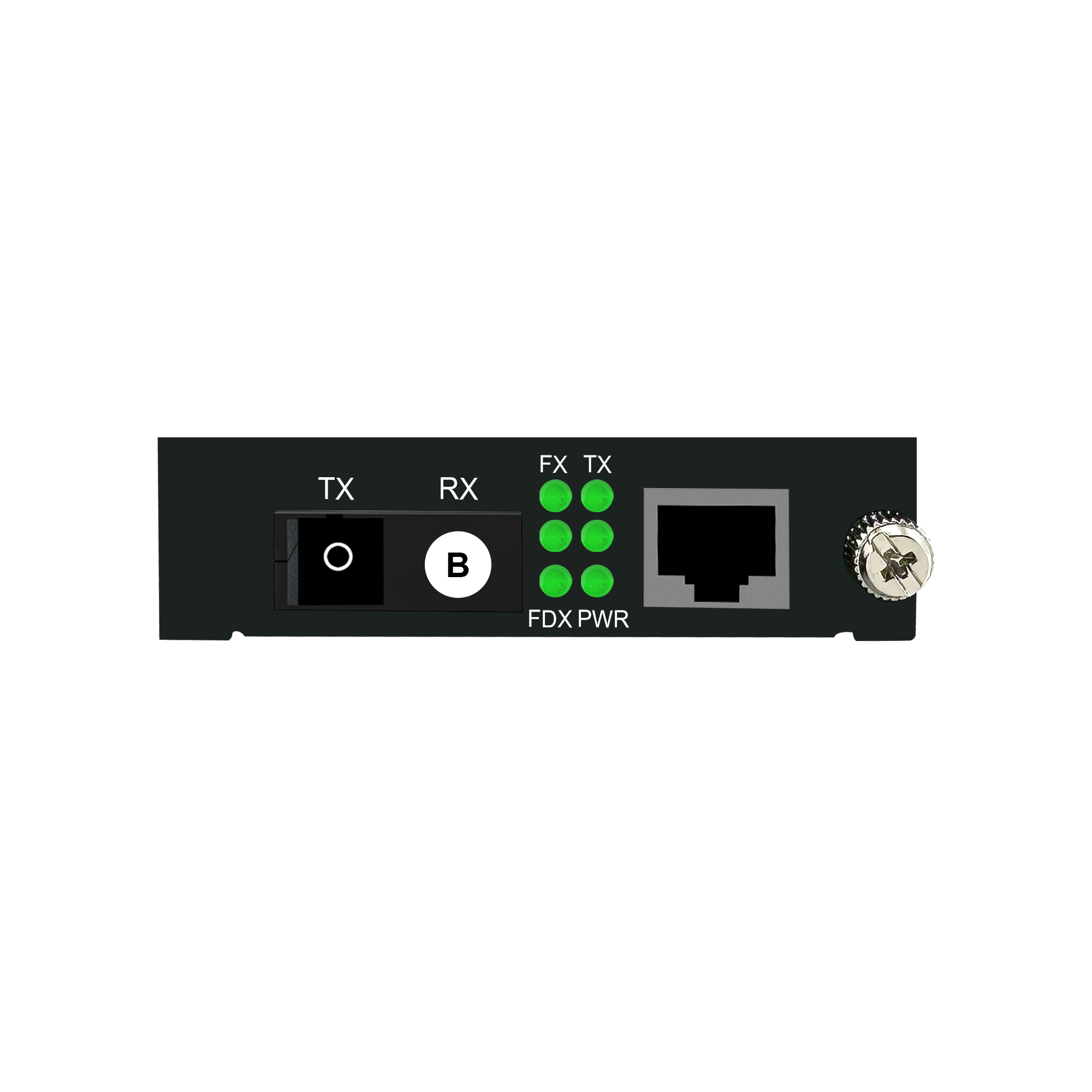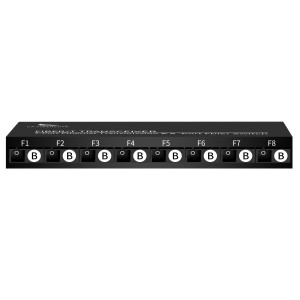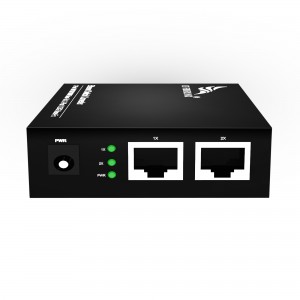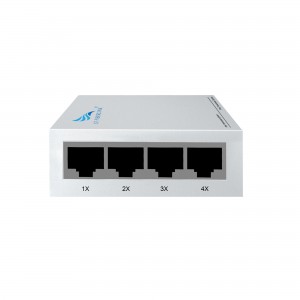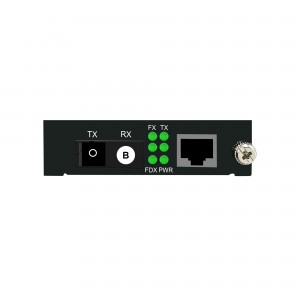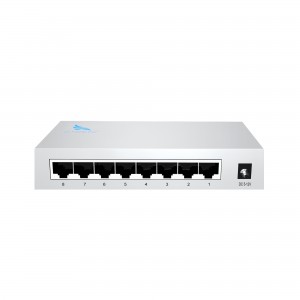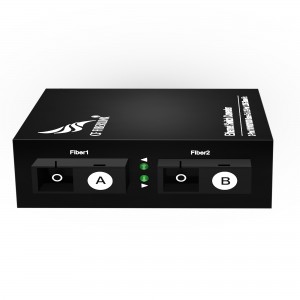2-port 10/100/1000M 3km Plug-in Media Converter (single-mode single-fiber SC)B-end
2-port 10/100/1000M 3km Plug-in Media Converter (single-mode single-fiber SC)B-end
Product Features:
Introducing Portable Fiber Converters: Your Efficient Connection Solution
In this modern era of advanced technology and communications, having a reliable and efficient network infrastructure is vital for both businesses and individuals. Huizhou Changfei Optoelectronics Technology Co., Ltd., a high-tech enterprise specializing in cutting-edge network solutions, brings you the latest addition to its product lineup—portable fiber optic converters.
Specifically designed to meet the demands of today’s fast-paced world, this compact fiber optic media converter combines the capabilities of 1 fiber and 1 electrical single-mode single-fiber transmission technology, making it ideal for businesses looking to enhance network performance . The excellent transmission distance of up to 3 kilometers allows you to easily connect to remote devices while enjoying an uninterrupted and stable connection.
Portable fiber optic converters are engineered with the utmost precision to ensure seamless integration into your network infrastructure. Its card-style design is easy to install and fits perfectly in industry-standard 16-slot racks. Not only does this feature save valuable space, it also simplifies maintenance, allowing you to focus on the more important tasks at hand.
Recognizing the importance of visual cues, this remarkable converter is equipped with dynamic LED indicators. These indicators provide real-time status updates, enabling you to diagnose and resolve any connectivity issues in a timely manner. Gone are the days of tedious guesswork and manual troubleshooting – with portable fiber converters, simplicity and efficiency are the norm.
At Huizhou Changfei Optoelectronics Technology Co., Ltd., we are unwavering in our commitment to delivering cutting-edge solutions. As an industry-leading manufacturer, we employ strict quality controls and use only the highest quality components to ensure unrivaled reliability and durability in all of our products. Portable fiber converters are a testament to our commitment to providing efficient network solutions to meet the changing needs of businesses around the world.
In conclusion, Huizhou Changfei Optoelectronics Technology Co., Ltd.’s portable fiber converters are the perfect choice for businesses looking to improve network performance. Its superior functionality, compact design and user-friendly features make it a versatile and indispensable tool for enhanced connectivity. Say goodbye to connectivity issues and embrace a world of seamless communication and productivity with a portable fiber converter. We believe that Huizhou Changfei Optoelectronics Technology Co., Ltd. can provide excellent network solutions to drive your business into the future.
What This Product Does
◇ CF-101GSK-3B is a gigabit media converter, providing a gigabit RJ-45 port and a gigabit SC fiber port, which can convert between electrical and optical signals.
How This Product Works
◇ CF-101GSK-3B adopts WDM (wavelength division multiplexing) technology, helping send and receive data at a distance of up to 3 km with only a single mode fiber, which saves half of the cable deployment cost for customers. CF-101GSK-3B transmits data at 1310 nm wavelength and receives data at 1550 nm wavelength on optical fiber. Therefore, the terminal device used in conjunction with the CF-101GSK-3B should send data at a wavelength of 1550 nm and receive data at a wavelength of 1310 nm. CF FIBERLINK another media converter CF-101GSK-3A is one of the products that can cooperate with CF-101GSK-3B.
Other Features
◇ Besides, this media converter can be used as a standalone device (no rack required) or used with CF FIBERLINK’s CF-2U16 rack for auto MDI/MDI-X in TX port in which duplex mode is automatically negotiated.
technical parameter:
| Model | CF-101GSK-3B | |
| Interface Characteristics | ||
| Fixed Port | 1* 10/ 100/ 1000Base-T RJ45 port
1* 1000Base-X uplink SC fiber port |
|
| Ethernet Port | 10/ 100/ 1000Base-T auto-sensing, full/half duplex MDI/MDI-X self-adaption | |
| Twisted Pair
Transmission |
10BASE-T: Cat3,4,5 UTP(≤100 meter)
100BASE-T: Cat5e or later UTP(≤100 meter) 1000BASE-T : Cat5e or later UTP(≤100 meter) |
|
| Optical Port | Default optical module is single-mode single-fiber 3km, SC port | |
| Wavelength/Distance | A-end: RX1310nm / RX1550nm 0 ~ 40KMB-end:RX1550nm/ RX1310nm 0 ~ 40KM | |
| A-end: RX1490nm / RX1550nm 0 ~ 120KMB-end:RX1550nm/ RX1490nm 0 ~ 120KM | ||
| Chip Parameter | ||
| Network Protocol | IEEE802.3 10BASE-T, IEEE802.3i 10Base-T,IEEE802.3u 100Base-TX, IEEE802.3u 100Base-FX, IEEE802.3x
IEEE802.3ab 1000Base-T;IEEE802.3z 1000Base-X; |
|
| Forwarding Mode | Store and Forward(Full Wire Speed) | |
| Switching Capacity | 4Gbps | |
| Buffer Memory | 3Mpps | |
| MAC | 2K | |
| LED Indicator | Fiber | FX(green) |
| Data | TP (green) | |
| Single / duplex | FDX (green) | |
| Power | PWR (green) | |
| Power | ||
| Working Voltage | AC:100-240V | |
| Power Consumption | Standby<1W, Full load<5W | |
| Power Supply | DC:5V/2A industrial power supply | |
| Lightning protection &Certification | ||
| Lightning protection | Lightning protection: 4KV 8/20us, Protection level: IP30 | |
| Certification | CCC;CE mark, commercial; CE/LVD EN60950;FCC Part 15 Class B; RoHS | |
| Physical Parameter | ||
| Operation TEMP | -20~+55°C;5%~90% RH Non condensing | |
| Storage TEMP | -40~+85°C;5%~95% RH Non condensing | |
| Dimension (L*W*H) | 98mm*75mm*2mm | |
| Installation | Desktop, CF-2U16 slot rack | |
Product Size:
Product application diagra:

How to choose a fiber optic transceiver?
Optical fiber transceivers break the 100-meter limitation of Ethernet cables in data transmission. Relying on high-performance switching chips and large-capacity caches, while truly achieving non-blocking transmission and switching performance, they also provide balanced traffic, isolation and conflict. Error detection and other functions ensure high security and stability during data transmission. Therefore, fiber optic transceiver products will still be an indispensable part of actual network construction for a long time. So, how should we choose fiber optic transceivers?
1. Port function test
Mainly test whether each port can work normally in the duplex state of 10Mbps, 100Mbps and half-duplex state. At the same time, it should be tested whether each port can automatically select the highest transmission speed and automatically match the transmission rate of other devices. This test can be included in other tests.
2. Compatibility test
It mainly tests the connection ability between the optical fiber transceiver and other devices compatible with Ethernet and Fast Ethernet (including network card, HUB, Switch, optical network card, and optical switch). The requirement must be able to support the connection of compatible products.
3. Cable connection characteristics
Test the fiber optic transceiver’s ability to support network cables. First, test the connection ability of Category 5 network cables with lengths of 100m and 10m, and test the connection ability of long Category 5 network cables (120m) of different brands. During the test, the optical port of the transceiver is required to have a connection capability of 10Mbps and a rate of 100Mbps, and the highest must be able to connect to a full-duplex 100Mbps without transmission errors. Category 3 twisted pair cables may not be tested. Subtests can be included in other tests.
4. Transmission characteristics (transmission loss rate of data packets of different lengths, transmission speed)
It mainly tests the packet loss rate when the optical fiber transceiver optical port transmits different data packets, and the connection speed under different connection rates. For the packet loss rate, you can use the test software provided by the network card to test the packet loss rate when the packet size is 64, 512, 1518, 128 (optional) and 1000 (optional) bytes under different connection rates. , the number of packet errors, the number of packets sent and received must be more than 2,000,000. Test transmission speed can use perform3, ping and other software.
5. The compatibility of the whole machine to the transmission network protocol
It mainly tests the compatibility of fiber optic transceivers to network protocols, which can be tested in Novell, Windows and other environments. The following low-level network protocols such as TCP/IP, IPX, NETBIOS, DHCP, etc. must be tested, and the protocols that need to be broadcast must be tested. Optical transceivers are required to support these protocols (VLAN, QOS, COS, etc.).
6. Indicator status test
Test whether the status of the indicator light is consistent with the description of the panel and the user manual, and whether it is consistent with the current status of the fiber optic transceiver.


